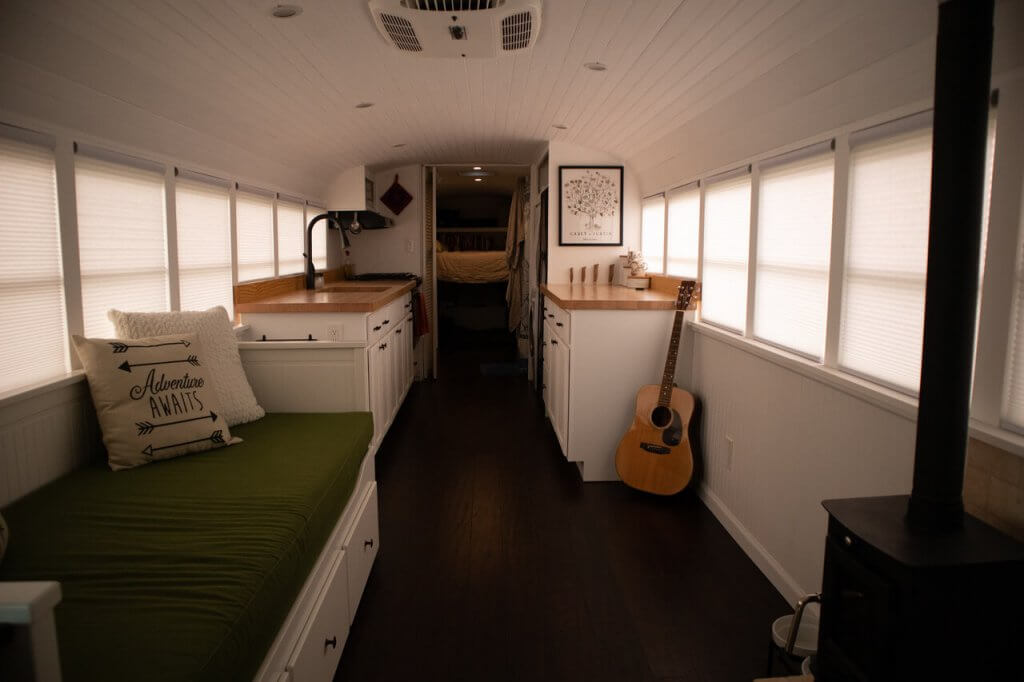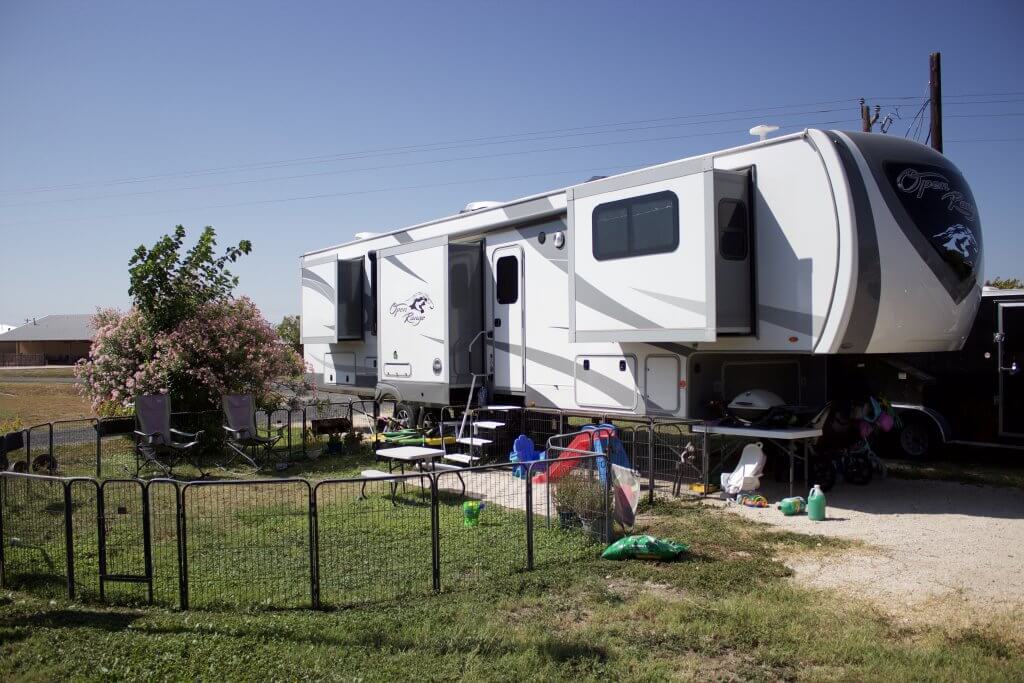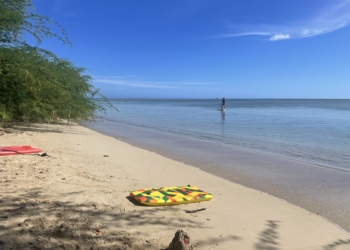Most military families can relate to the dread of having to pack up and move to their next base and then unload everything, only to do it again in a few years. What if it only took three hours to pack up and the same amount of time to unload for your next move? Living in an RV makes this speedy transition possible.
Two Air Force families, the Harringtons and the Tretters, met when they lived a couple of spots down from each other at an RV park on a base in southwest Texas. If you are interested in the RV life, here is their advice for success based on firsthand experiences.

Casey Harrington, her husband, their infant daughter and dog have been stationed at Little Rock Air Force Base in Arkansas since June 2019, living at a mobile home park in a bus remodeled into a deluxe RV. They’ve had their rig since August 2017.
“We bought the bus in Arizona and it took us about a year to get it to the point where we could live in it,” Casey Harrington explained.
The Harringtons spent weekends and holidays revamping their 270-square-foot RV. The family’s favorite feature in their rig is the wood burning stove.
“Before we started building the RV, we went to Camping World to look at RVs and figure out a good layout for ours,” Harrington said.
Camping World is where they got the idea that they wouldn’t have a hallway layout. Instead, they would build theirs broken down into rooms by walls. One of the perks of this layout is having a bigger bathroom and more counter space than most RVs.
She added that the best part about living in their RV is knowing they built it themselves. The most challenging part is having to vacuum every day due to dog hair build up.
A popular question she receives is “Is there anything you miss about living in a house?” To which Harrington replies “having a bathtub.” The family was also initially worried about space, but that hasn’t proved to be a problem.
“I thought we weren’t going to have enough space, but I think having a smaller space is better. It takes like one second to put in a little laundry and watch your food at the same time — everything is just so easy,” she said.

With having less space comes fewer belongings — a philosophy she easily adapted to.
“I don’t like having a lot of stuff anymore,” Harrington said. “It’s just funny how your mindset changes. When you live in a small space, you realize how much you don’t need.”
As long as her husband is in the military, state side, they anticipate living in the RV.
[Also read: From active duty to ‘tiny living’]
The Harringtons past RV neighbor in Texas, the Tretters, also have an insightful RV story of their own to share.
Lindsey Tretter, her husband, two young daughters and two dogs are currently stationed at Laughlin Air Force Base in Texas, having lived off base at an RV park in their 436-square-foot, fifth wheel since March 2019. The family originally adopted this was of life in 2018, but relocated after tiring of the installation’s strict and inconvenient rules.
“We didn’t want to buy a house here, and the rental market was a little extreme,” Tretter said.
Living in an RV with children has been rewarding for this family as well.
“It gets us outside more often,” Tretter said. “The girls have become accustomed to being more social even with people who are not their age because there aren’t a lot of kids around here. We are surrounded by a lot of full timers, so we always have dinners together. Although their grandparents don’t live here, they have a lot of people that I consider to be pseudo grandparents and they love it.”

One piece of advice from Tretter for those interested in full-time RV living is to note that it’s not as affordable as some people may think.
“You have your insurance payment on it, the payment for the actual rig itself, you have to have a quality vehicle to tow it with, you have to pay for your RV spot at the park as well as the electricity you use, and internet. It adds up,” she said.
Wondering what the perks of living in an RV are? Tretter noted easy cleaning, the community and simple living. Living in an RV does have its challenges and those come in the form of grey and black water tanks.
“You have to flush them often. If you forget and they are full, you can be taking a shower and all of a sudden your water is no longer draining,” Tretter explained.
If you want to be a pro at RV living, Tretter suggests having two necessities — a residential fridge and a washer/dryer.
The family plans to live in their RV for their current assignment. Depending on their next duty station, they may continue to live in it or keep it for travel.
Minimalism isn’t for everyone, but if you are considering transitioning from house living to RV living, be sure to keep these families’ experiences in mind — you never know when their advice will come in handy.
Read comments






































